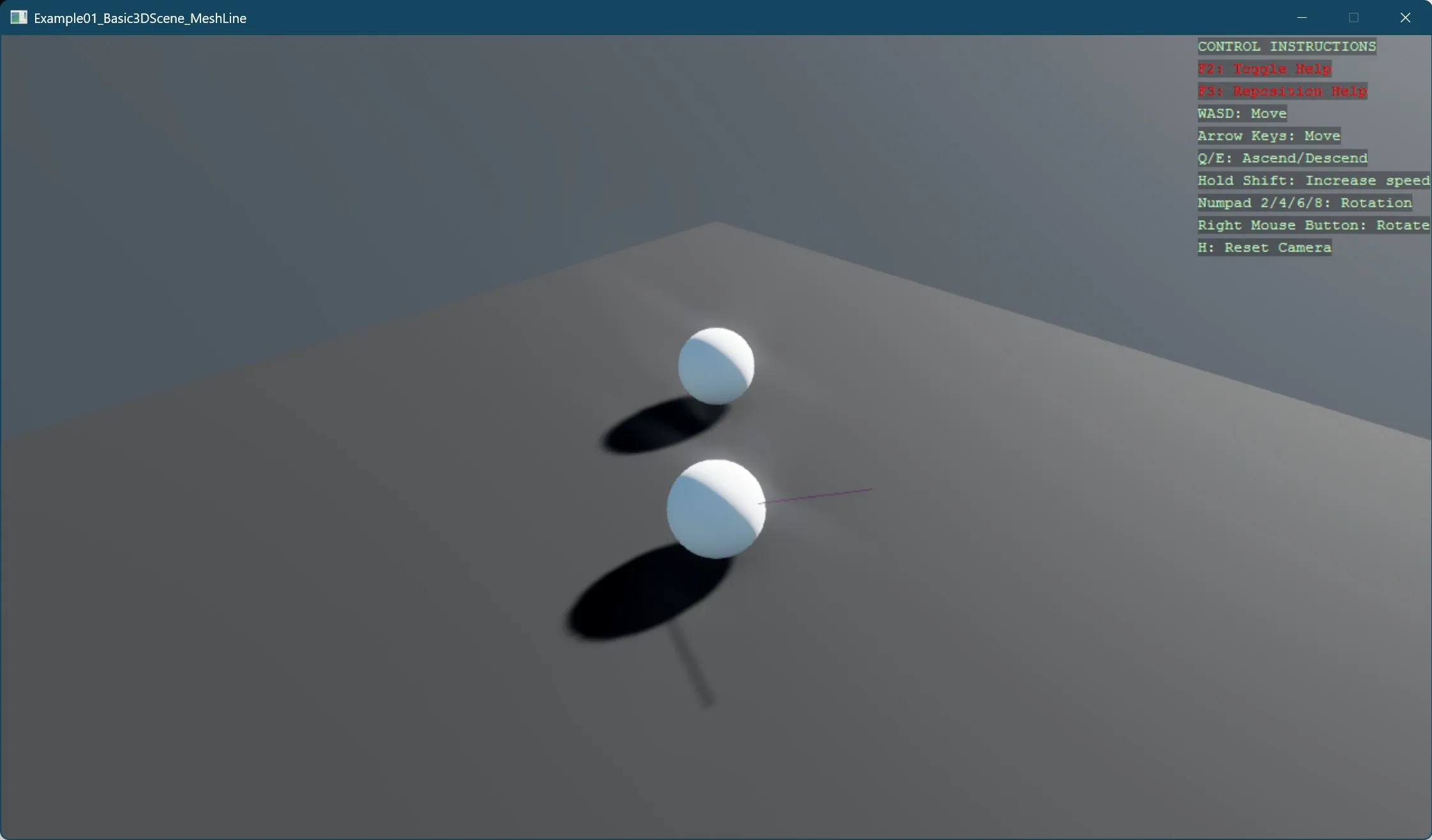Mesh line
This example demonstrates how to create a simple 3D scene with a custom mesh line connecting two objects. The code shows:
- Setting up a basic 3D scene
- Creating two sphere entities positioned in 3D space
- Building a custom mesh line by:
- Defining vertices for start and end points
- Creating vertex and index buffers
- Configuring a mesh draw with line list primitive type
- Applying an emissive color material for visibility
The line is attached as a child to one of the spheres, creating a visual connection between the two objects. This approach illustrates how to create basic geometric primitives and custom line visualizations in a Stride 3D environment using low-level graphics APIs.
Note
This example requires the additional NuGet packages Stride.CommunityToolkit.Bepu, Stride.CommunityToolkit.Skyboxes and Stride.CommunityToolkit.Windows. Make sure to install all before running the code.

View on GitHub.
using Stride.CommunityToolkit.Bepu;
using Stride.CommunityToolkit.Engine;
using Stride.CommunityToolkit.Rendering.Gizmos;
using Stride.CommunityToolkit.Rendering.ProceduralModels;
using Stride.CommunityToolkit.Skyboxes;
using Stride.Core.Mathematics;
using Stride.Engine;
using Stride.Graphics;
using Stride.Rendering;
using Buffer = Stride.Graphics.Buffer;
using var game = new Game();
game.Run(start: Start);
void Start(Scene rootScene)
{
game.SetupBase3DScene();
game.AddSkybox();
var lineEntity = CreateLineEntity(game);
var entity1 = CreateSphereEntity(game);
entity1.Transform.Position = new Vector3(0, 8, 0);
entity1.AddChild(lineEntity);
var entity2 = CreateSphereEntity(game);
entity2.Transform.Position = new Vector3(-0.01f, 9, -0.01f);
entity1.Scene = rootScene;
entity2.Scene = rootScene;
};
static Entity CreateSphereEntity(Game game)
=> game.Create3DPrimitive(PrimitiveModelType.Sphere);
static Entity CreateLineEntity(Game game)
{
// Create vertex buffer with start and end points
var vertices = new Vector3[] { new(0, 0, 0), new(1, 1, -1) };
var vertexBuffer = Buffer.New(game.GraphicsDevice, vertices, BufferFlags.VertexBuffer);
// Create index buffer
var indices = new short[] { 0, 1 };
var indexBuffer = Buffer.New(game.GraphicsDevice, indices, BufferFlags.IndexBuffer);
var material = GizmoEmissiveColorMaterial.Create(game.GraphicsDevice, Color.DarkMagenta);
// Or use this for a specific color
//var material = game.CreateMaterial(Color.DarkMagenta);
var meshDraw = new MeshDraw
{
PrimitiveType = PrimitiveType.LineList,
VertexBuffers = [new VertexBufferBinding(vertexBuffer, new VertexDeclaration(VertexElement.Position<Vector3>()), vertices.Length)],
IndexBuffer = new IndexBufferBinding(indexBuffer, is32Bit: false, indices.Length),
DrawCount = indices.Length
};
var mesh = new Mesh { Draw = meshDraw };
var model = new Model { mesh, material };
return new Entity { new ModelComponent(model) };
}